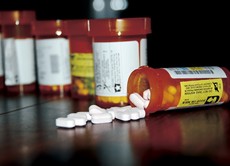Xanax Abuse
Xanax is a commonly prescribed sedative used to treat anxiety disorders, panic attacks, and insomnia. When used under a doctor’s supervision and at the proper dosage, Xanax is an effective medication that offers relief to anxiety sufferers, allowing them to function at a normal level. However, when taken at a higher than prescribed dosage, Xanax can produce a tipsy feeling high, much like the effect of alcohol. Xanax abuse is becoming ever more prevalent in our society, especially among teenagers.
Rise of Xanax Abuse among Teens
Xanax has become popular among teens because the high it produces is similar to alcohol, and therefore the drug is seen as relatively harmless. Xanax is quickly metabolized, so the effects don’t last as long as alcohol, which furthers the appeal to teens. In many cases, it is actually easier and cheaper for a teenager to obtain Xanax than alcohol. A recent study by the National Institute on Drug Abuse reports that nearly 70 percent of teens who abuse prescription drugs get them from the medicine cabinets of their own family members or friends.
Dangers of Xanax Abuse
A growing number of teenagers have turned to abusing prescription drugs such as Xanax under the misguided assumption that prescription drugs are safe. While Xanax is medically approved for use by teenagers who suffer from anxiety disorders or panic attacks, taking Xanax without a doctor’s supervision, or in a higher dose than prescribed, can have very dangerous side effects.
 Symptoms of Xanax addiction can include dizziness or drowsiness, slurred speech, and loss of coordination. As with any sedative drug, prescription or illegal, Xanax abuse carries the risk of personal injury, respiratory suppression, and accidental overdose. Long term Xanax abuse can lead to cardiovascular problems such as irregular heartbeat and high blood pressure, respiratory distress, and memory loss. Other dangers of Xanax abuse can include depression, manic episodes, and seizures.
Symptoms of Xanax addiction can include dizziness or drowsiness, slurred speech, and loss of coordination. As with any sedative drug, prescription or illegal, Xanax abuse carries the risk of personal injury, respiratory suppression, and accidental overdose. Long term Xanax abuse can lead to cardiovascular problems such as irregular heartbeat and high blood pressure, respiratory distress, and memory loss. Other dangers of Xanax abuse can include depression, manic episodes, and seizures.
Mixing Xanax and Alcohol
Many teens are ingesting Xanax along with alcohol or grapefruit juice in an attempt to increase the potency of the drug. This practice is downright dangerous and can have serious consequences because alcohol and grapefruit juice significantly increase the sedative effect of the drug, which can cause respiratory suppression, coma, and even death. While many people take Xanax legally to help control their anxiety or depression, it should never be used unless prescribed by a doctor.
Treatment for Xanax Abuse
Xanax is a highly addictive drug that can have severe withdrawal symptoms that include agitation, insomnia, vomiting, diarrhea, and convulsions. Xanax, like many sedatives, should never be stopped “cold turkey” due to the risk of seizure and is meant to be weaned off gradually, or through medically assisted detox. If you’re teen is currently struggling with a Xanax addiction there is plenty of excellent treatment available. Do not be afraid to speak with your teen or young adult about the dangers of Xanax teen drug abuse. It could be the most important conversation you ever have.






